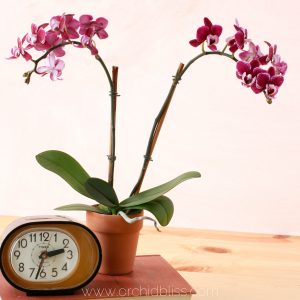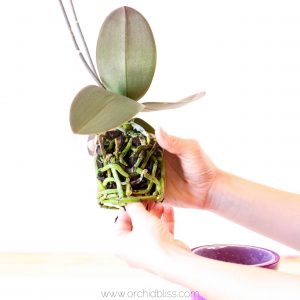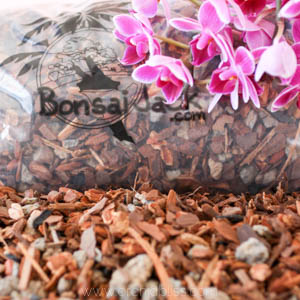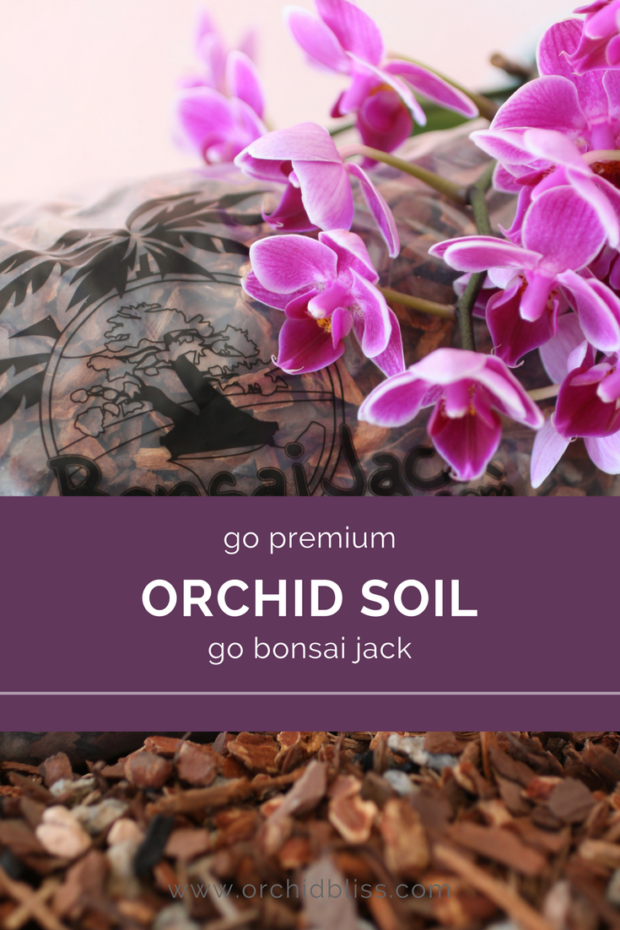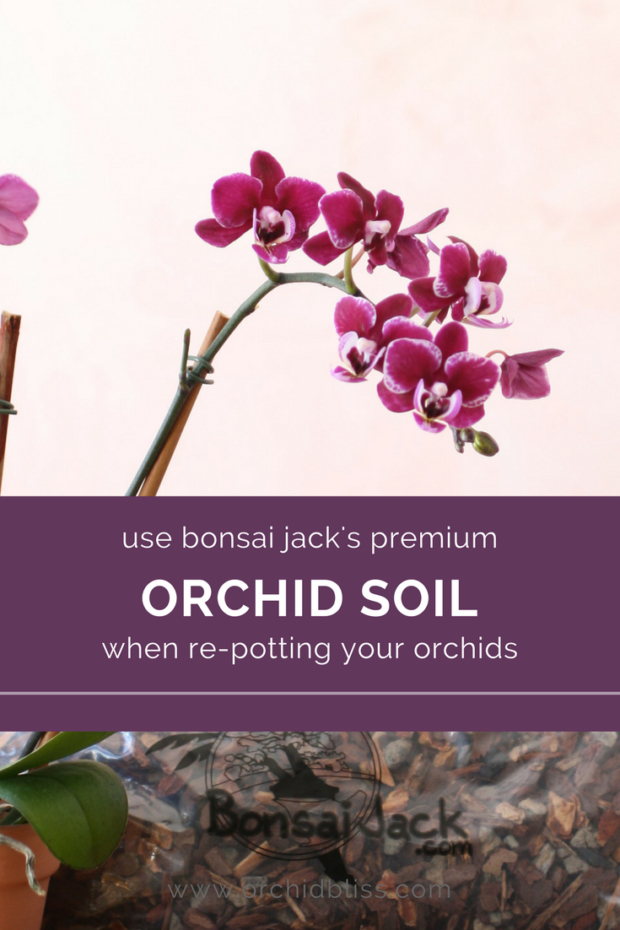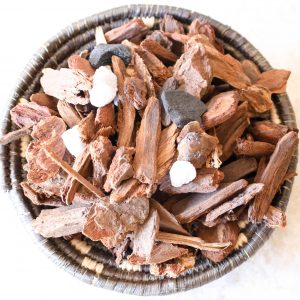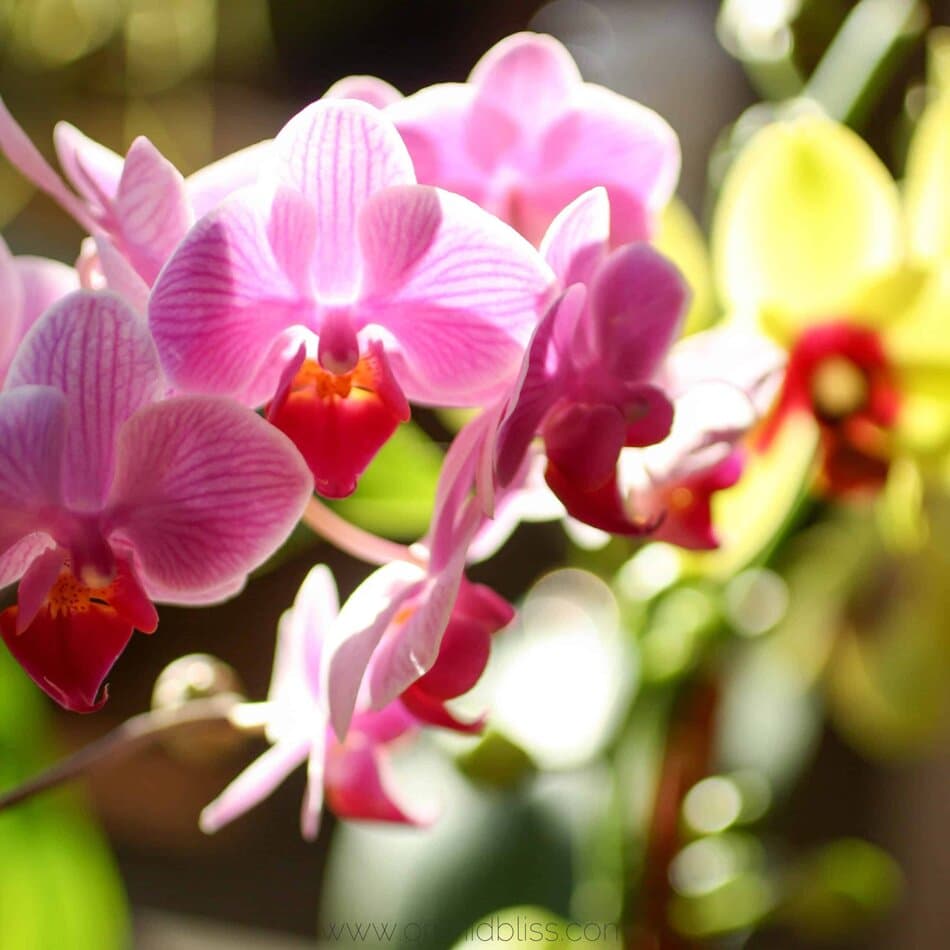
Your guide to Orchid Potting mix
Growing healthy orchids is extremely satisfying. Being able to bloom your orchid year after year is what makes growing orchids a way of life. Growing robust orchids, however, doesn’t start with the flowers, it starts with the roots. That’s why making an informed decision about orchid potting media is essential.
There are many things to consider when deciding on the proper potting mix for your orchid. The most important consideration is choosing an orchid potting mix that will provide life-sustaining water, and oxygen, to the orchid’s roots. At the same time, the potting mix should also be fast draining to prevent root rot and long-lasting, so you don’t have to re-pot every 6 months. Deciding on the best orchid mix for an orchid can be difficult to figure out. That’s why in this article we will discuss the things to consider so you can choose the very best potting mix for your orchid.
If limp orchid leaves are a problem for your orchids, download my free cheat sheet on how to prevent limp leaves and rotten roots. Click here for the super helpful cheat sheet.
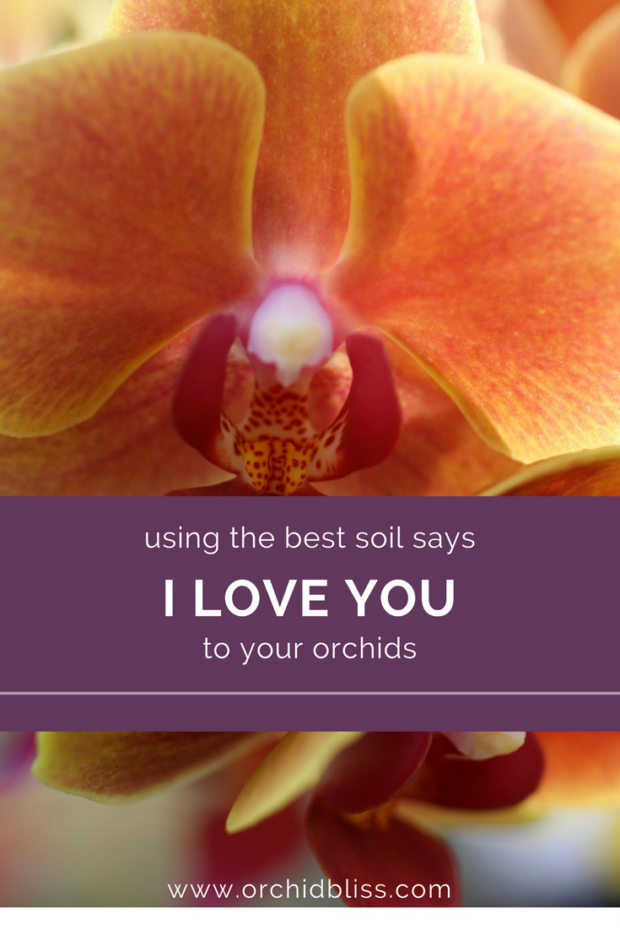
Some of the links on this page may be affiliate links. Click here to learn more.
Use This Chart to Choose the Correct Potting Media Components
COMPONENT | PROPERTIES | PHOTO |
Bark | Fir and Monterey bark is the most commonly used potting media for orchids. It is long-lasting, porous, and free-draining. | |
Clay Pellets (LECA, Aliflor, Hydroton) | Clay pellets are commonly added to mixes to prevent compaction and add drainage. Must be leached as it absorbs salts. | |
Coco Fiber & Coir | Coco fiber products are water retentive, yet have good aeration. | |
Cork Oak Chips | Cork is sustainable, does not absorb water, is free-draining and is long-lasting. | |
Horticulture Charcoal | Use as an additive to decrease moisture, increase drainage. It is a natural filter for impurities such as salts. | |
Lava Rock | Does not decompose, adds aeration, but must be leached as it does absorb salts. | |
Peat | Is used as an additive to increase water retention. Superior to Coco fiber products. | |
Pumice | Used as an additive, volcanic origin, adds drainage. Similar properties to clay pellets. | |
Sphagnum Moss | Use the highest quality available, Very absorbent. Must leach as it does absorb salts. | |
Sponge Rock (Perlite) | Primarily used as an additive to increase aeration. Volcanic glass. | |
Wool Rock | Used as an additive to increase water retention. Is make of spun glass. Use gloves, Is not addractive, so bury it in the mix. |
ORCHID POTTING MIX – Sphagnum Moss
Sphagnum moss is highly absorbent. This is good as it provides consistent moisture to an orchid’s roots. This is particularly important for orchids such as the phalaenopsis, as they do not have pseudobulbs – which provide water storage.
However, be vigilant not to overwater, especially as the center of the sphagnum moss tends to stay wet. By the same token, don’t allow the moss to ever fully dry out. For best results, think of Goldilocks – sphagnum moss must be not too dry, not too wet, but just right – slightly damp.
Overwatering is the number one cause of limp leaves and rotten roots – which leads to pre-mature orchid death😔. Download my free cheat sheet on how to prevent limp leaves and rotten roots. Click here for the super helpful cheat sheet.
Best-Practice Guide for Using Sphagnum Moss
There are a couple of things you can do when potting orchids in sphagnum moss to keep the center of the pot from getting too wet and rotting the roots. You can pot orchids kokedama-style. In this method to roots are loosely wrapped in sphagnum moss, while the center of the moss ball is not sphagnum moss. I like to use something that does not hold water. Like a wiffleball or pickleball, or even a styrofoam ball.
Another safeguard when using sphagnum moss is to use either small pots (3-inch diameter), or shallow pots. Following these guidelines will do more than just keep the roots from becoming waterlogged – you’ll be able to provide your orchids with the necessary airflow to the roots.
Don’t Pack Sphagnum Moss Tightly
Whenever using sphagnum moss, the trick is to pot the orchid very loosely. This will allow oxygen to the roots and moss.
As I mentioned, sphagnum moss is highly absorbent. Not only does the moss absorb water, but it also absorbs fertilizer salts. If your orchids are potted in sphagnum moss, plan on potting them once a year. You can tell if you’ve waited too long to pot because the tips of the leaves will begin to dry out and turn yellow, then brown. Even a healthy, thriving orchid can quickly experience rapid root loss if fertilizer salts absorbed by the sphagnum moss become too high. At this point, the moss fibers, which are an organic potting medium, will quickly break down.
TIP: Remember, to be on the safe side, plan to re-pot orchids potted in sphagnum moss yearly. And, don’t re-use sphagnum moss.
How to Hydrate Sphagnum Moss
While sphagnum moss absorbs water, it does take about 20 minutes or so for the moss to become fully hydrated. When getting ready to re-pot your orchids with sphagnum moss be sure to allow plenty of time for the moss to become hydrated before using it. The moss does expand upon hydration and the orchid could become tightly potted.
Sphagnum moss is also a good companion for other potting mixes. For example, you can add a bit of sphagnum moss to fir bark or LECA pellets for a bit of added moisture.
Sphagnum moss for seedlings, keikis, and sick orchids.
Because sphagnum moss is so absorbent, it is a popular potting medium for seedling orchids, keikis, and for orchids with a poor root system.
Seedling orchids often do not have a developed root system. For this reason, it is common to pot up multiple seedlings together in sphagnum moss until roots are established and the seedling is large enough to be potted in its own pot.
Keikis are baby orchids growing on the mother plant. Phalaenopsis orchids are known for growing keikis. Some dendrobium orchids regularly grow keikis, rather than flowers, if proper care conditions are not met. When the keiki grows several roots that are a few inches long, the keiki can be removed from the mother plant right and potted up. Using sphagnum moss right around the roots helps the roots stay hydrated until a robust root system is established.
If you have a sick orchid suffering from root loss, sphagnum moss can help get your orchid back on the road to recovery. Gently wrap sphagnum moss around what’s left of the orchid’s roots. Increase humidity by placing the orchid in a clear, plastic bag. Dry cleaner bags are perfect. Then set the orchid in a shady spot – away from direct sunlight. Given time, the orchid will begin to grow new, healthy roots. The rootless orchid will benefit from the absorbent nature of sphagnum moss as well as from the slightly acidic properties of the moss which keep bacteria and fungi at bay.
Buying Sphagnum Moss
When selecting a sphagnum moss, go for a long-fibered moss – such as New Zealand or even Chilean. Look for sphagnum moss labeled 5-star, long-fiber grade. Stay away from sphagnum peat moss, organic moss, and moss for orchids.
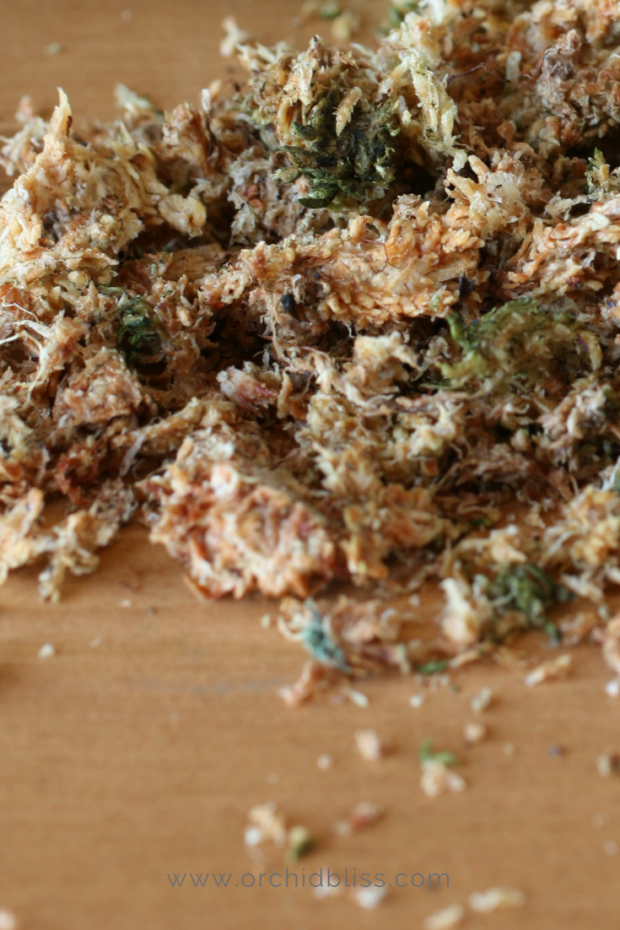
Orchid Potting Mix – Fir Bark
For good reason, the most popular orchid potting mix is fir bark. Fir bark is a well-draining potting medium that allows for air circulation around the orchid’s roots, and it also has some water retention capability.
Additionally, pine bark decays slowly so you can wait to re-pot every one to two years.
Moreover, fir bark resists compaction and decay, allowing for vital for oxygen to access the orchid’s roots.
Fir bark is available in different sizes. Choose larger, 1-inch, grades for larger rooted orchids – such as vandas. Medium grades, ½-inch for orchids with medium roots – phalaenopsis, oncidium, and dendrobium. Finer-grade fir bark is a good choice for orchids with smaller roots such as paphiopedilums and cymbidiums.
Enhancing Fir Bark with Other Components
Another point in favor of fir bark is that you can easily mix in other components. Because I live in the desert, I like to add wool rock to my fir bark mix for added water retention. Along with wool rock, perlite, horticulture charcoal, and LECA are all popular, inorganic additives for fir bark orchid potting mixes that further enhance fir bark’s natural resistance to compaction, help maintain the well-draining quality of the mix, and promote good airflow to the orchid’s roots.
Over time, fir bark will absorb water and fertilizer salts more readily and will begin to break down. For this reason, you will need to pot orchids every 1-2 years with a fresh potting mix. Never reuse fir bark.
How to Know When it’s Time to Replace Fir Bark and Re-Pot
It is simple to know when to replace fir bark. Simply, break open a piece of the bark. Is the center dark or light? If it’s dark – it’s time to re-pot. Is it light? The fir bark is still in good shape. You can wait several months to pot. Pinch a chunk of fir bark between your thumb and finger. Is it soft and spongy? Yes? You waited too long – it’s past time to pot your orchid.
TIP: If using fir bark as a potting medium, use a fertilizer with a higher percentage of nitrogen, such as Dyna Gro 9-3-6.
Unlike sphagnum moss, bark is not highly absorbent. This is a good thing as bark allows the orchid’s roots to breathe and slowly releases water to the orchid’s roots. The best bark-based potting mixes include some perlite and horticulture charcoal to keep the mix from compacting and to add slow-release moisture to the roots.
Fir Bark Watering Know-How
If you’re accustomed to growing in sphagnum moss and switch to bark, you will be surprised at how much more often the orchid will need to be watered, especially in the beginning. Over time, the bark will become more absorbent.
The best way to know when to water is by weight. Lift the orchid pot after you’ve watered it. Feel how heavy it is. Wait a day or two. Heft the pot again. Notice the difference. I know this doesn’t sound very scientific, but it is a reliable way to tell if your orchids need water. Get to know the feel of a wet, semi-wet, and dry pot.
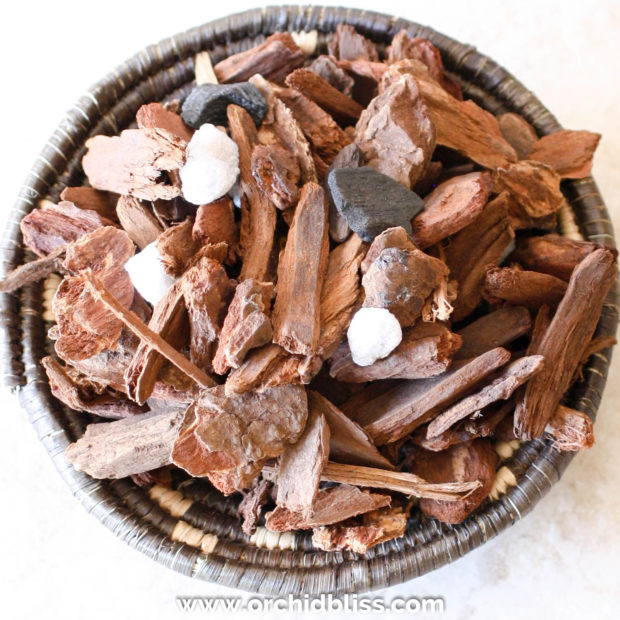
Fir Bark Orchid Potting Mix I Recommend
For those of you who are looking for premium orchid soil, make sure to check out rePotme Orchid Mix. This is the soil that has helped me to grow my orchids. Since I live in an arid climate, I add a couple of squares of wool rock to give my orchids a bit of added moisture.
Using the best orchid potting mix will help to ensure healthy roots that will lead to the overall vigor of the orchid plant. It’s your way of saying thank you, bloom again, please! to your orchids.
Inorganic Orchid Potting Media
Perlite
Perlite is lightweight and adds air space to orchid potting mixes – most often fir bark. To be effective for orchids, it needs to be chunky (size 3 or larger). Be on the lookout as the smaller size is most readily available. Perlite does not absorb water and is lightweight – making it easy to ship. Perlite can crush, so when adding to a potting mix, use care not to inhale perlite dust.
Charcoal
Charcoal is another popular additive to fir bark as it will not compact and help keep fir bark an open, free-draining mix. Charcoal does not absorb water, but it does absorb fertilizer salts. Though over time, the salts will leach back into the potting media when the charcoal can no longer absorb salts. For this reason, charcoal should not be reused and should be changed every year or two.
LECA
LECA (Lightweight Expanded Clay Aggregate) (also known as grow rocks, Hydroton, Growstone, and Aliflor) is popular among hydroponic gardeners, making it readily available for orchid growers. LECA has some water retention capability, is lightweight, and does not break down. Like other inorganic mix-ins, LECA can be added to fir bark to reduce compaction and add airflow to the orchid’s roots. Also, LECA can be reused after sterilizing by boiling and microwaving. The main drawback to LECA is that it readily absorbs fertilizer salts. To compensate, use only pure water or, after using fertilizer on your orchids, flush thoroughly with water.
On a personal note, I have found my dendrobiums, which like a free-draining mix, but do not like to be potted) do very well with LECA.
Wool Rock
Wool rock is basically insulation and can be made to either absorb or repel water. Like LECA, wool rock is popular among the hydroponic community. I always add wool rock when potting with both fir bark and LECA. It adds water retention while still keeping the overall mix free-draining. It is not the prettiest of additives, but in small amounts, I don’t find it to be distracting.
Ready. Set. Go!
The kind of potting mix that you find works best for you will depend on your care style (do you like to water often, or do you travel a lot?) and your climate. I live in the desert where humidity is low, so wool rock has done much to keep my orchids from drying out while still keeping the potting mix free-draining. If you live in a tropical or semi-tropical climate, you’ll have all the humidity you need and the potting mix will stay moist much longer. For example, I received an email from a reader in New Zealand who needed help because her orchids were drowning in humidity.
Whichever potting mix you choose, embrace it and resist the urge to try every new mix under the sun. At the end of the day, orchids can grow in a variety of potting mixes – as long as they are free-draining.
If you do decide to experiment with a new potting media, I cannot express how important it is not to change over all your orchids to the new potting media at once. Try one or two orchids in the new media. See how the orchids do – watch them for a year. If all is well, pot a couple more in the new/experimental media.
For beginning orchid growers, I recommend starting with fir bark.
- Fir bark has the best track record. Orchid growers have been using it for decades.
- Fir bark is sustainable (a by-product of the logging industry).
- Fir bark resists decay, and compaction and is free-draining.
- Fir bark mimics the orchid’s natural growing environment on the branches of trees. Even the roots of semi-terrestrial orchids such as slipper orchids and cymbidiums do not dig deep into the earth.
- For a high-quality mix, check out Bonsai Jack’s premium fir bark potting mix for orchids.
Check out the articles below to learn more about potting orchids:
There are many reasons to repot your orchids:
- your orchids are climbing out of their pot
- if it has been a year, or longer since they’ve been potted
- you want to know the conditions of your orchid’s roots
- your orchid has finished blooming
Don’t let anxiety about the new experience of potting an orchid keep you from repotting your orchid. Follow these links to find out if the time is right to pot your orchids, and to learn how to do it.












